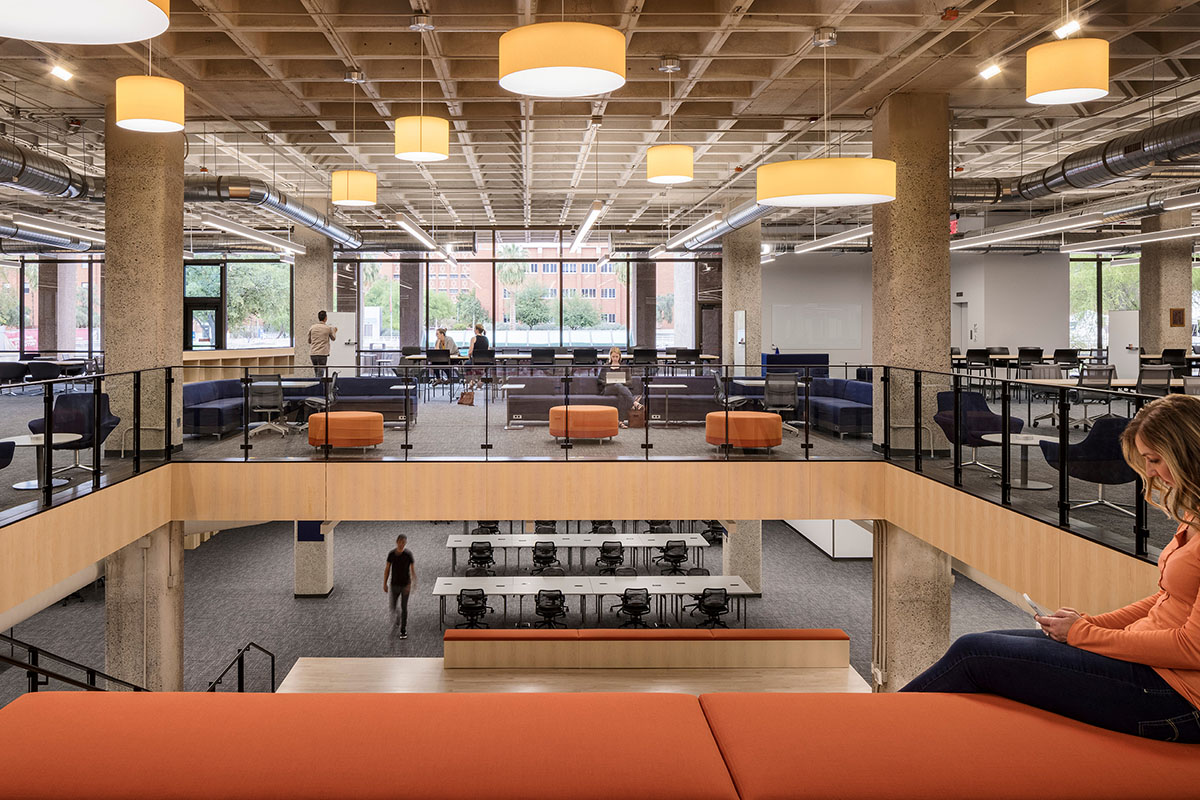
The Student Success District at the University of Arizona is a groundbreaking addition to the University’s urban fabric, strengthening connections between new and existing structures, activating underutilized spaces both indoors and out, and prioritizing the student experience. This complex project redefines and revitalizes the Main Library and the Bear Down Gymnasium, reorients the entry to the Weaver Science-Engineering Library, and merges them with the new 55,000 SF Bartlett Center for Academic Success.
Envisioned as a unified and universally accessible space that broadens the definition of student support, the District brings together the university’s commitment to academic and research excellence, student support, health and wellness, and the preparation students need to become leaders in the modern workplace. Completed in the spring of 2022, the Student Success District is the place that drives students’ 24/7 development through an array of student support services and spaces based on collaborative, hands-on learning with deep technological engagement.
This is an extraordinarily complex program and site, and the way the architects responded to the creation of new places for students is admirable. This is a great place-making project, a really innovative uplift and reimagining of place. The old and new, inside and outside work well together.